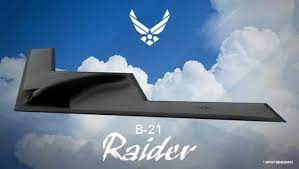
A report from the National Interest states, the U.S. strategic bomber B-21 Raider poses a significant threat to Russian air defense systems.
While many of the characteristics of the B-21 Raider may never be available for public consumption, as in they will never be declassified, however high-ranking representatives from the US Air Force reveal that the new stealth bomber can strike any target in the world regardless of whether it is day or night.
The report states the stealth bomber will pose a serious challenge to Chinese and Russian air defense systems.
While Russia has claimed that its S-400 and S-500 air defense missiles system can detect and destroy “stealth aircraft”, the task of locating and destroying the significantly more advanced B-21 stealth bomber will be challenging.
According to these high ranking sources from the USAF, Russia will need to develop even more sensitive radars that can accurately track the movements of bombers such as the B-21 Raider.
The presence of completely new stealth technologies in the B-21 could make the bomber “the worst nightmare” for Russia.
The B-21 Raider, currently being developed by Northrop Grumman is scheduled to enter service in 2025. While outwardly the B-21 has the appearance of that of the B-2, the underlying technologies in the B21 Raider are significantly more advanced.
Both bombers however share the concept of a subsonic stealth aircraft, capable of carrying missile or bombs.
One of the main tasks of the stealth bombers, in addition to delivering nuclear strikes, is to gain covert access to the missile launch or bomb drop area and completely destroy the enemy’s air defense facilities, allowing tactical aircraft to dominate the skies with relatively more safety.
The B-21 Raider’s main non-nuclear weapons are expected to be hypersonic missiles, including the promising AGM-183A ARRW.
According to Lockheed Martin, bombers such as the B-21 Raider are capable of reaching speeds of Mach 17 – seventeen times the speed of sound.
With a range of up to 800 kilometers, ARRWs are slated for serial production and deployment in 2022.
In aviation hypersonic missiles, the United States is fast catching up to Russia, which has already deployed hypersonic missiles with its Aerospace Forces.




